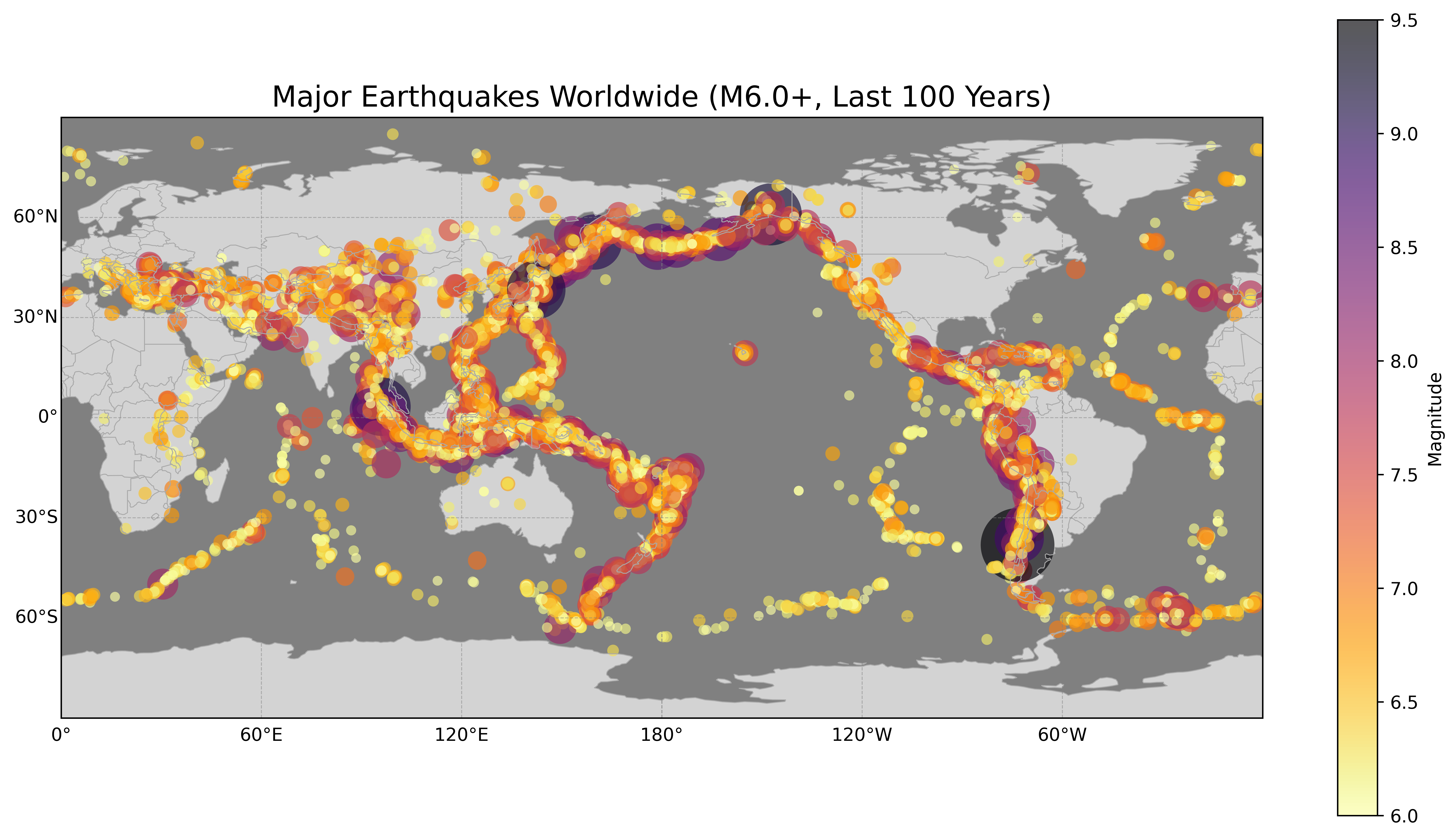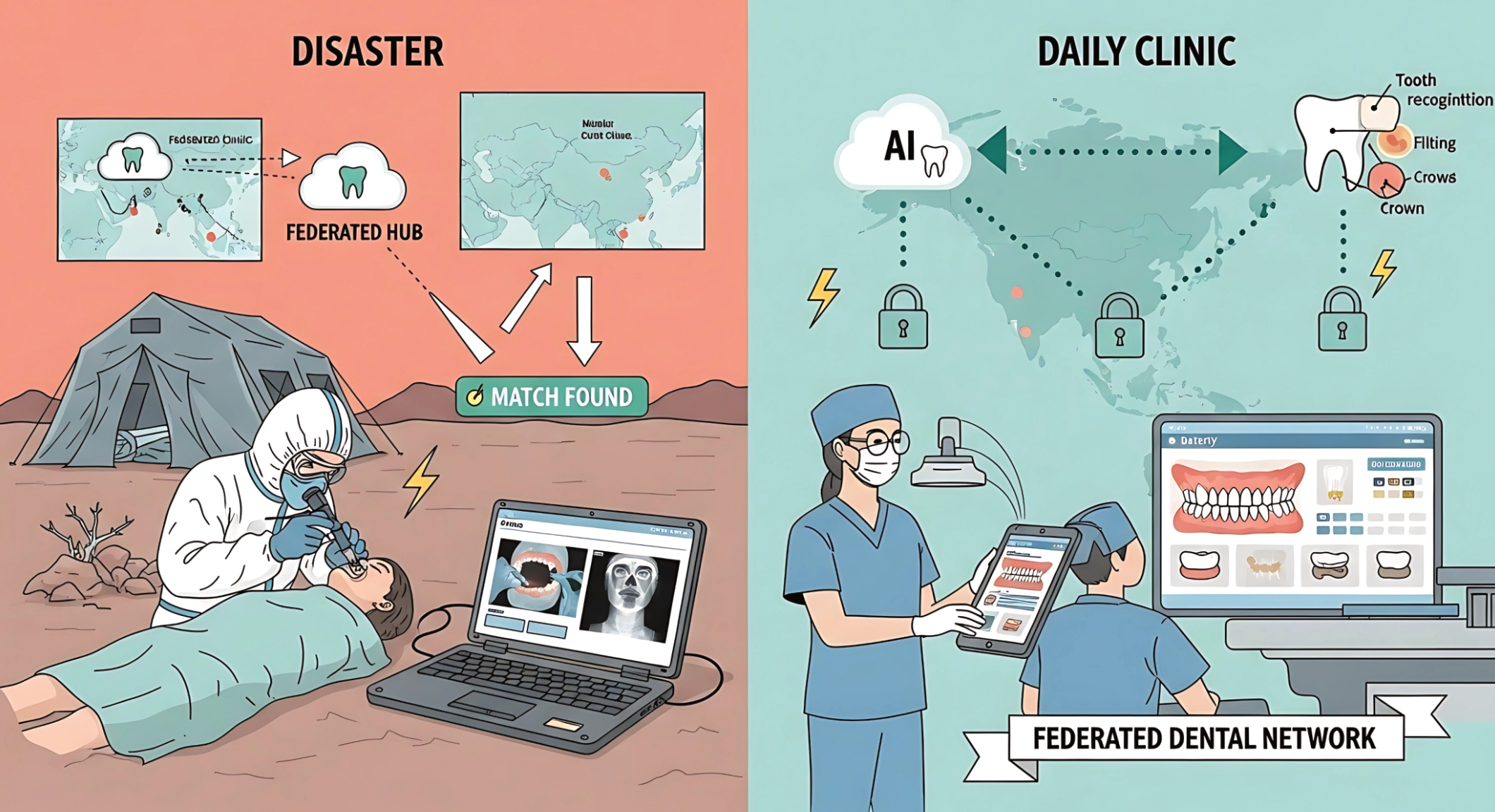Earthquakes, tsunamis, and fires can erase fingerprints but seldom the records engraved in our teeth. Yet disaster victim identification (DVI) still depends on paper charts, local jargon, and manual checks—slow, error-prone, and painful for families.
Our FHIR-based, federated-learning framework removes that bottleneck. Clinics keep X-rays and photos on-site; only encrypted weight updates travel to a cloud hub, building a pan-Asian matching engine without moving personal data.
Post-mortem images shot in a field morgue can be linked to ante-mortem records hundreds of kilometres away in minutes. Families receive answers sooner, and every nation’s privacy rules stay intact.

The same platform that speeds DVI also improves daily dentistry. A quantised tooth-recognition model runs on battery tablets in rural clinics, auto-labelling teeth, fillings, and crowns to create a standard chart in seconds. Charts sync via federated learning, sharpening the central model.
In a disaster the network already holds dental histories; in peacetime it offers chair-side decision support, teledentistry triage, and cross-border research.
Next steps: multilingual voice charting and a “trust ledger” that logs every query. With privacy, AI, and open standards, PADIN weaves scattered clinics into a resilient mesh—ready for catastrophe and routine care alike.

